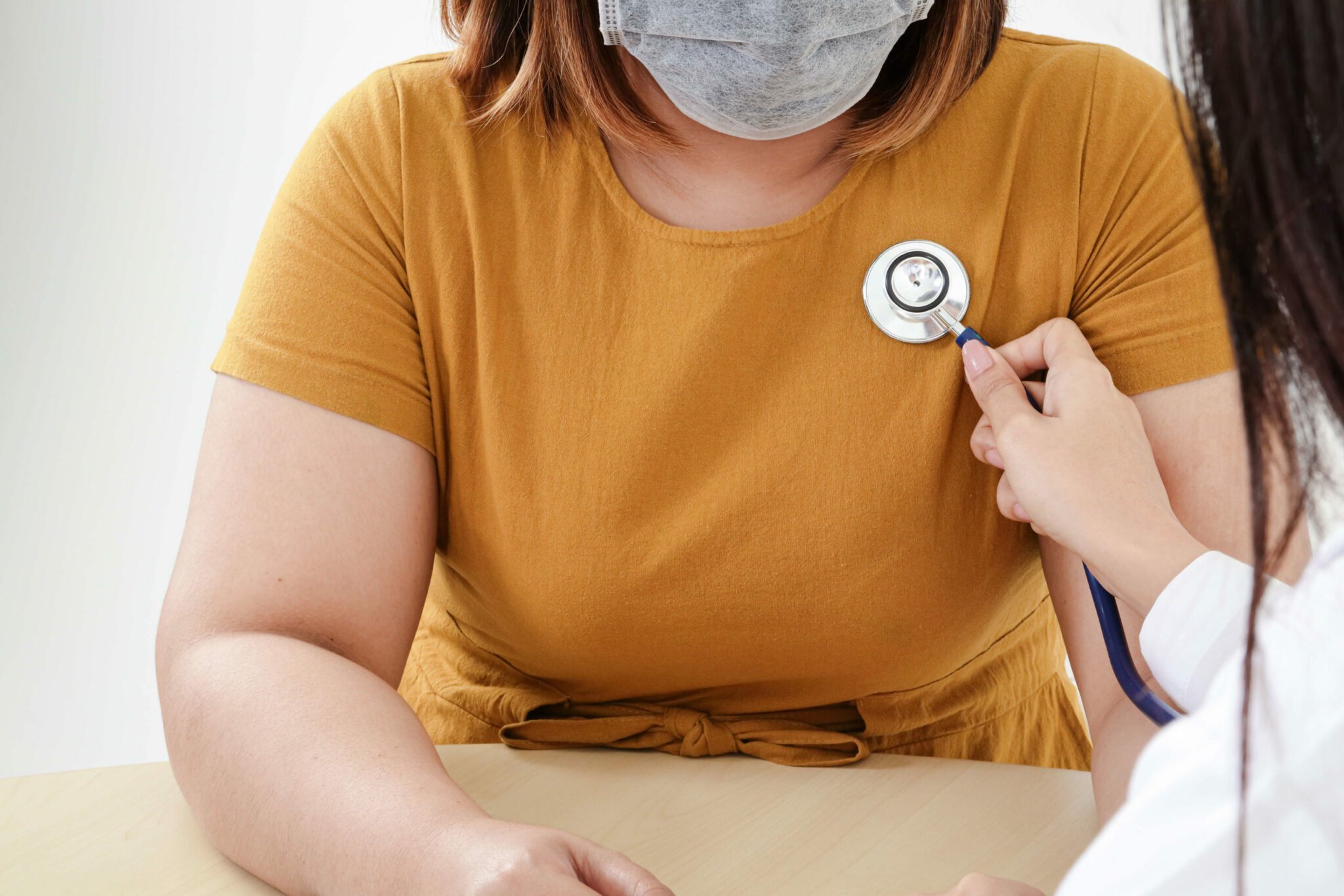عوامل خطر كوفيد-19 – الوزن

There are certain factors like weight that put particular groups of people at higher risk of experiencing severe disease if infected by SARS CoV-2. Click here for an overview.
Characteristics such as gender, age, and weight are collectively known as demographics. These factors play a key role in determining how a person responds following infection with SARS CoV-2.
This article explores weight in more detail:
The effect of weight
Your body weight can be used as an indicator to determine how at risk you are of developing severe or critical COVID-19 symptoms. An optimal Body Mass Index (BMI) is 18.5–24.9 kg/m² and if you lie within this range, your weight is considered to be healthy. People with a healthy BMI have enough body fat to function effectively. Body fat, or adipose tissue, is an essential component of every organ and cell in our body; it has multiple roles, including insulation, energy storage, and the maintenance of hormones. Fat cells are also a source of stem cells that can differentiate into other cell types, such as bone and nerve cells, as required. These stem cells, therefore, have regenerative capabilities that are able to replace damaged or otherwise compromised tissues in our body as needed. This means that a certain amount of adipose tissue is required for optimal health.
High BMI
Individuals with a BMI above 25 kg/m² are termed overweight, and those with a BMI above 30 kg/m² are termed obese. Overweight and obese people are at higher risk of developing multiple health disorders, such as cardiovascular disease, stroke, and cancer. They are also more likely to be severely or chronically symptomatic if infected by SARS CoV-2:
- Low grade inflammation. Having an excess of body fat means you are likely to be in a chronic state of low-grade inflammation, which can impair your immune system’s response to infection. Following SARS CoV-2 infection, the obese are more likely to be hospitalised because their bodies are unable to fight the infection effectively.
- Co-existing health conditions. The other health disorders listed above that often accompany obesity, also put individuals at a higher risk of severe disease. Those who are severely obese (BMI > 40 kg/m²) are at increased risk of suffering from acute respiratory distress syndrome, which is a major complication of COVID-19 and can hinder a doctor’s ability to treat an affected patient.
Low BMI
A BMI below 18.5 kg/m² means that a person is medically underweight. Their body is storing insufficient fat, resulting in less overall protection. Being underweight weakens the immune system, putting a person at increased risk of developing severe COVID-19 symptoms. Individuals who are underweight may be malnourished, and as a result may lack some of the essential nutrients, vitamins and minerals necessary for their cells and organs to function properly. This makes them more vulnerable to any external challenges or insults, such as complications arising from an infection with a virus.
Obese, overweight, and underweight individuals should consider contacting their local healthcare provider, and/or a nutritionist, with a view to establishing a healthy plan for losing or gaining weight sensibly.
Sources:
- “COVID-19 Map.” Johns Hopkins Coronavirus Resource Center, coronavirus.jhu.edu/map.html.
- “People Who Are at Higher Risk for Severe Illness.” Centers for Disease Control and Prevention, Centers for Disease Control and Prevention, 14 May 2020, www.cdc.gov/coronavirus/2019-ncov/need-extra-precautions/groups-at-higher-risk.html.









